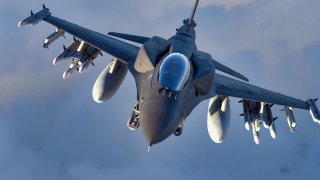Russia's S-400 Supply to India Postponed Until 2026 Amid Ukraine War Demand
India's anticipation for the completion of its S-400 "Triumf" air defense system acquisition from Russia faces a significant delay, with the final units now expected by August 2026, nearly two years behind the initial schedule.
Summary: India's anticipation for the completion of its S-400 "Triumf" air defense system acquisition from Russia faces a significant delay, with the final units now expected by August 2026, nearly two years behind the initial schedule. The delay, caused by the heightened demand within the Russian military amid ongoing operations in Ukraine, underscores the unforeseen prolongation of the conflict affecting Moscow's defense commitments.
The Indian military will have to wait a while longer to receive its two units of the Russian-made S-400 “Triumf” air defense system. According to recent reports, the advanced anti-aircraft platforms are in such high demand with the Russian military that the final planned squadrons won’t be sent until at least August 2026—nearly two years behind schedule.
India began deploying the first regimental set of the S-400 in 2021 in its Punjab sector to counter Pakistan’s air force and missiles. Russian officials had previously pledged to complete the deliveries of the Triumf by the end of 2024.
Under the $5.4 billion deal between New Delhi and Moscow, India was to receive five squadrons of the S-400. However, the final two could not be supplied due to the ongoing war in Ukraine. It is the latest platform to see a delay, further highlighting that the Kremlin never expected its “special military operation” to drag on—and certainly not into its third year. The delays are due to the losses of Russian air defense systems.
S-400: Will There Be Buyer’s Remorse?
It was also in March 2021 that U.S. Secretary of Defense Lloyd Austin warned his Indian counterpart Rajnath Singh that New Delhi could face sanctions for its purchase of the Russian S-400 air defense system. India has long been among Russia’s largest customers for military hardware. Yet, the supply of Russian weapons to India has been interrupted due to the inability of the parties to agree on payment methods.
India is not the first country to likely have buyer’s remorse for adopting the S-400.
NATO member Turkey also opted to move forward with the Russian-made air-defense system and was expelled from the U.S.-led F-35 Joint Strike Fighter program as a result—with Washington and NATO officials warning Ankara that the S-400 was not compatible with the F-35 Lightning II stealth fighter and that it would compromise the security of the aircraft.
Turkey had been a part of the supply chain for the Lockheed Martin F-35 Lightning II and reportedly paid $1.25 billion to participate in the effort. Producing parts for the fifth-generation aircraft was expected to have generated $9 billion in revenue for Ankara, while six F-35 aircraft produced for Turkey were not delivered.
In an almost ironic twist, Turkey’s S-400s are not operational, while Turkish Defense Minister Yaşar Güler simply suggested the platform is a defense system.
Russia’s S-400 Air Defense System in the Crosshairs
The S-400 Triumf system (known by NATO as the SA-21 Growler) was designed to block airstrikes, including cruise, tactical, and operational ballistic missiles, in addition to intermediate-range missiles.
The air defense system can also be used against ground targets. It launches 40N6 missiles and can hit targets up to four hundred kilometers away, even under intensive enemy fire and jamming. It first entered service in 2007.
The S-400’s mission set and capabilities are comparable to the U.S. Patriot system. Yet, unlike some Patriot interceptors, the S-400 does not currently employ hit-to-kill ballistic missile defense technology.
At the start of 2023, Russia had 96 S-400s in service. At least five of the systems have come under attack—including strikes on the command posts, launcher, or radars. The S-400 remains a high-value target, and Russia’s need to replace those destroyed will likely come before any additional units are sent to India.
Author Experience and Expertise: Peter Suciu
Peter Suciu is a Michigan-based writer. He has contributed to more than four dozen magazines, newspapers, and websites with over 3,200 published pieces over a twenty-year career in journalism. He regularly writes about military hardware, firearms history, cybersecurity, politics, and international affairs. Peter is also a Contributing Writer for Forbes and Clearance Jobs. You can follow him on Twitter: @PeterSuciu. You can email the author: [email protected].


